 November 29, 2018 John E. Ross, KD8IDJ, Editor
| ||||||||
Robust Member Voting Results in ARRL Division Leadership Changes Four new Division Directors will take their seats around the conference room when the ARRL Board of Directors next meets in January. After the votes were tallied on November 16 at ARRL Headquarters, incumbent Directors in the ARRL Hudson, New England, and Roanoke divisions had lost their re-election bids to challengers. In addition, a
new Director and Vice Director will fill seats in the Northwestern Division that are being vacated by incumbents. A total of 22,257 votes were cast in seven contests within five ARRL Divisions. In the Central Division, incumbent Kermit Carlson, W9XA, edged out challenger Valerie Hotzfeld, NV9L, 1,898 to 1,755 votes. Carlson, of Batavia, Illinois, has been Central Division Director since 2016. Incumbent Vice Director Carl Luetzelschwab, K9LA, faced no opposition for re-election. In the Hudson Division, incumbent Director Mike Lisenco, N2YBB, narrowly lost his bid for a new term to challenger Ria Jairam, N2RJ, of Sussex, New Jersey, 1,292 to 1,239 votes. "I am very excited to have a front row seat to shape the future of our beloved
pastime," Jairam reacted on her QRZ.com profile. Lisenco has served as Hudson Division Director since 2013. He's been most visible as a prime proponent of the Amateur Radio Parity Act and as ad hoc Legislative Advocacy Committee chair. Vice Director Bill Hudzik, W2UDT, was unopposed for a new term. In the New England Division, challenger Fred Hopengarten, K1VR, of Lincoln, Massachusetts, edged out veteran incumbent Director Tom Frenaye, K1KI, who has twice served as New England Division Director and once was an ARRL Vice President. Frenaye first served as Director from 1985 until 1992, when he was elected as an ARRL Vice President, an office he held until January 1996. Later that year, he was again elected as Director, taking office in 1997, and has served since that time.
Hopengarten, an attorney, is the author of the book Antenna Zoning for the Radio Amateur, now in its 2nd edition. An ARRL Volunteer Counsel, Hopengarten said in his campaign that ARRL should work to attract more new members and retain more Technician licensees. He joins incumbent Vice Director Mike Raisbeck, K1TWF, also an attorney. Raisbeck faced no opposition. In the Northwestern Division, incumbent Jim Pace, K7CEX, opted not to seek a new term after serving since 2014, opening the door to a three-way race for the seat. Mike Ritz, W7VO, of Scappoose, Oregon, topped the field, outpolling current Vice Director Bonnie Altus, AB7ZQ, 1,589 to 1,308 votes. The third candidate, Horace Hamby, N7DRW, garnered 495 votes.
"I am grateful beyond measure, and will work diligently for all of you," Ritz said in a message to the Division's membership. He also thanked Pace and Altus for their "leadership and dedication." Succeeding Altus as Northwestern Division Vice Director will be current Eastern Washington Section Manager (SM) Mark Tharp, KB7HDX. He topped a field of three candidates with 1,368 votes, to 1,228 for Daniel Stevens, KL7WM, and 767 for Delvin Bunton, NS7U. Tharp served as Eastern Washington SM for 15 years, starting in 2003. Altus, a former Oregon SM, has served as Vice Director since 2014. Jack Tiley, AD7FO, of Spokane Valley, Washington, has been appointed to serve out Tharp's unexpired term of office as SM.
In the Roanoke Division, George "Bud" Hippisley, W2RU, of Penhook, Virginia, defeated incumbent Director Dr. Jim Boehner, N2ZZ, 1,891 to 1,365 votes. Boehner has been Roanoke Division Director since 2015. Hippisley served as ARRL Atlantic Division Vice Director from 1982 until 1985, and more recently as the Eastern Area Chair for the ARRL National Traffic System (NTSâ¢). The co-author of Practical Antenna Handbook, Hippisley is a 2010 recipient of the ARRL George Hart Distinguished Service Award. Incumbent Roanoke Division Vice Director Bill Morine, N2COP, fended off a challenge from John Humphrey, W4IM, 1,742 to 1,505 votes. All successful candidates will begin 3-year terms at noon on January 1, 2019. Appointment Made in Rocky Mountain Division ARRL President Rick Roderick, K5UR, has named Robert Wareham, N0ESQ, of Highlands Ranch, Colorado, as Rocky Mountain Division Vice Director. Wareham will serve the remaining term of Jeff Ryan, K0RM, who assumed the position of Rocky Mountain Director upon the resignation of Dwayne Allen, WY7FD. An ARRL Life Member, Wareham has been serving as Colorado Section Emergency Coordinator since 2011. He previously served in the Field Organization as Colorado's State Government Liaison and as Public Information Officer. He will serve the remainder of the Vice Director's term, which runs through 2019. New WSJT-X 2.0-rc5 Beta Version Now Available, First "Serious" FT8 Contest this Weekend, A fifth "candidate release" -- or beta version -- of WSJT-X 2.0 now is available for download and use by beta testers. WSJT-X Developer Joe Taylor, K1JT, says WSJT-X 2.0-rc5 is stable, works well, and fixes known problems in RC4, the most-recent beta version released in mid-November. A new FT8-only practice session and contest are set for this weekend.
The first "serious" FT8 contest -- the FT8 Roundup -- is set for the December 1 - 2 weekend. In the brand-new operating event, radio amateurs worldwide will contact and exchange information with other amateurs using FT8 on 80, 40, 20, 15, and 10 meters. Any station may work any other station. The exchange is signal report and state/province for US and Canadian participants. Non-US/VE stations will transmit a signal report and consecutive serial number starting with 001. Taylor also noted that the ARRL RTTY Roundup on January 5 - 6 will, for the first time, permit the use of FT8 as well as traditional RTTY. Changes in RC5 relative to RC4 include correcting the "worked before" logic for color highlighting, removing the 5-minute mouse timer, displaying and logging in UTC for contests, improving the layout of Working Frequencies and Station Information tables, and allowing deletes and edits in Fox and Contest log windows.
"You may need to invoke Settings | General | Colors | Reset Highlighting on your first program start with this version," Taylor said. The Quick-Start Guide to WSJT-X 2.0 has again been updated to reflect the changes. The Development Group recommends using RC5 in the conventional FT8 subbands at audio transmit frequencies of 2,000 Hz and higher. The latest beta versions are not backward compatible. Users of version 1.9.1 and earlier will be unable to decode RC4 and later transmissions, and vice-versa, Taylor pointed out. "As more users upgrade their software to WSJT-X 2.0 -- and particularly after the General Availability release on December 10 -- the new protocol should start to dominate the conventional FT8 subbands," Taylor said. "As soon as possible after December 10, everyone should upgrade to WSJT-X 2.0." Read more. The Doctor Will See You Now! "Station Computers" is the topic of the current (November 22) episode of the "ARRL The Doctor is In" podcast. Listen...and learn!
Every 2 weeks, your host, QST Editor-in-Chief Steve Ford, WB8IMY, and the Doctor himself, Joel Hallas, W1ZR, will discuss a broad range of technical topics. You can also email your questions to doctor@arrl.org, and the Doctor may answer them in a future podcast. Enjoy "ARRL The Doctor is In" on Apple iTunes, or by using your iPhone or iPad podcast app (just search for "ARRL The Doctor is In"). You can also listen online at Blubrry, or at Stitcher (free registration required, or browse the site as a guest) and through the free Stitcher app for iOS, Kindle, or Android devices. If you've never listened to a podcast before, download our beginner's guide. New Book, Power Supplies Explained, Now Shipping Radio amateurs often take a power supply for granted. After all, it's just the box that, at the flick of a switch, provides stable dc voltage. A modern power supply is much more though, combining theory that dates back to the 19th century, incorporating the latest techniques in digital control, and taking advantage of a wealth of electronics practice in between. Power Supplies Explained sets out to explain in understandable terms what that box is doing, and it can also explain how you can design your own custom-built power supply.
Chapters include descriptions of linear supplies and a wide range of switching-mode power supply types, from simple buck converters to the latest offline high-efficiency types. Practical examples are based around typical Amateur Radio requirements and, in many cases, are versions of commercial products the author has successfully designed. Power Supplies Explained, published by the Radio Society of Great Britain (RSGB) and imported by ARRL, is available from the ARRL Store (ARRL Item no. 5010, ISBN: 978-1-91019-364-8, $24.95 retail). Call 860-594-0355 or, toll-free in the US, 888-277-5289. Sign Up for ARRL's 12 Days of Deals! We're making a list and checking it twice. Beginning Monday, December 3, 2018, ARRL will be offering 12 days of deals. Subscribe ARRL's 12 days of deals concludes Friday, December 14, 2018. Sign up now and unwrap a new deal every day! WX1AW at ARRL Headquarters will be SKYWARN Recognition Day Bonus Station SKYWARN⢠Recognition Day (SRD) 2018 takes place on Saturday, December 1, from 0000 until 2400 UTC, and Maxim Memorial Station W1AW will be active as bonus station WX1AW, the call sign of The HQ Doods Recreational Deployment Team. Developed in 1999 by the National Weather Service (NWS) and ARRL, SRD celebrates the contributions that SKYWARN volunteers make to the NWS mission of protecting life and property. During SKYWARN Recognition Day, many special event stations will be on the air from NWS offices, contacting radio amateurs around the world.
"Amateur Radio operators comprise a large percentage of the SKYWARN volunteers across the country," the NWS announcement said. "Amateur Radio operators also provide vital communication between the NWS and emergency management if normal communications become inoperative." W1AW Station Manager Joe Carcia, NJ1Q, said WX1AW will be active on 40 and 20 meters, using SSB and possibly CW, and will monitor local VHF and UHF repeaters. WX1AW will also monitor W1AW IRLP Node 4292, and Carcia asked IRLP users to limit transmissions to the basic exchange to avoid congestion on the node. WX1AW counts as a Bonus Station during SKYWARN Recognition Day, and contacts will be uploaded to LoTW after the event. QSL via QRZ.com, and include an self-addressed, stamped envelope. WX4NHC at the National Hurricane Center also will be on the air for SRD, 1300 - 1700 UTC for its 20th year of SRD participation. Event certificates are electronic and printable from the main website at the conclusion of SRD. Submit SRD log summaries using the online submission form. California Radio Amateur Receives Notice of Unlicensed Operation from FCC The FCC Enforcement Bureau on November 7 issued a Notice of Unlicensed Operation (NoUO) to Technician licensee Daryl Thomas, KE6MWS, of Carmichael, California, for allegedly operating an unlicensed FM radio station.
The Notice cautioned Thomas that operation of radio transmitting equipment without a valid radio station authorization, or in violation of the Commission's RF radiation limits, constitutes a violation of the federal laws cited above and could subject the operator to severe penalties, including, but not limited to, substantial monetary fines, in rem seizure of the offending radio equipment, and criminal sanctions including imprisonment. "Unlicensed operation of this radio station must be discontinued immediately and must not resume," the Notice warned. AMSAT Congratulates Qatar Amateur Radio Society, AMSAT-DL for Successful Es'hail-2 Launch AMSAT-NA has congratulated AMSAT-DL (Germany) and the Qatar Amateur Radio Society (QARS) for their roles in the successful launch on November 15 of the Es'hail-2 satellite, which carried AMSAT-DL's Phase 4-A transponder aloft. Es'hail-2 will be the first geostationary satellite to sport an Amateur Radio transponder. Launched from Cape Canaveral on a SpaceX Falcon 9 vehicle, Es'hail will be capable of linking radio amateurs from Brazil to Thailand, although it's unlikely to be accessible from North America with typical Amateur Radio satellite gear.
AMSAT-DL will commission the Amateur Radio transponder ground station in Doha, with the Es'hailSat control team. AMSAT-DL will announce when the transponders are available for use. Read more. -- Thanks to AMSAT News Service; Southgate Amateur Radio News FCC Approves Use of Galileo Global Navigation Satellite System in the US The FCC has granted, in part, the European Commission's request for a waiver of Commission rules so that non-federal devices in the US may access specific signals transmitted from the Global Navigation Satellite System (GNSS) known as Galileo. The action means that consumers and industry in the US may access certain satellite signals from the Galileo system to augment the US Global Positioning System (GPS). The Order said that the Galileo GNSS is uniquely situated with respect to the US GPS, because the two systems are interoperable and RF compatible.
The Order does not grant access to the Galileo E6 signal, which is transmitted over the 1,260 - 1,300 MHz frequency band, because this band is not allocated for RNSS in the US or used by the US GPS to provide position/navigation/timing (PNT) services. The FCC pointed out that granting access to the Galileo E6 signal could constrain US spectrum management in the future in spectrum above 1,300 MHz, where potential allocation changes are under consideration. The omission of the E6 signal also means that radio amateurs would not have to protect Galileo receivers from interference on 23 centimeters, which has been a significant issue in Europe. FCC Rejects 2004 AMSAT Petition to Reconsider Applying Orbital Debris Rules to Ham Satellites As part of a larger ruling, the FCC has rejected a Petition for Reconsideration that AMSAT filed 14 years ago, seeking to exempt Amateur Radio satellites from the FCC's satellite orbital debris mitigation requirements. The Commission took the opportunity in a Notice of Proposed Rulemaking and Order on Reconsideration, released on November 19, that revisits its orbital debris rules for the first time since their adoption in 2004. Among other things, AMSAT had argued at the time of its Petition that applying the orbital debris requirements to Amateur Radio satellites would be cost prohibitive, and that the FCC had not indicated what constitutes an acceptable orbital debris mitigation plan.
The FCC also said that in the years since the FCC issued its Orbital Debris Order, "numerous licensees, including amateur satellites operating in LEO, have successfully satisfied our orbital debris mitigation requirements. In a statement, AMSAT said, "We look forward to working with the FCC to craft a regulatory framework that addresses the growing concerns regarding orbital debris while preserving the flexibility for hobbyists, experimenters, and researchers to access a variety of orbits." December is Youngsters on the Air (YOTA) Month December is YOTA Month. Listen for stations on the air with YOTA as the call sign suffix. "The idea for this is to show the Amateur Radio hobby to young people and to encourage youngsters to be active on the amateur bands," said Tomi Varro, HA9T. "This is a great moment to show Amateur Radio to the world and to invite newcomers."
YOTA is primarily an International Amateur Radio Union (IARU) Region 1 (Europe and Africa) activity, but youngsters from the US in Region 2 (the Americas) have attended YOTA summer camps, which are held in a different country each year. Varro said both licensed and unlicensed youth will be making contacts. "Be helpful on the bands -- maybe these young operators are just making their first-ever contacts," he advised. YOTA stations are, in general, operated by individuals 25 or younger. The operating event takes place for the entire month of December UTC. As part of YOTA month, Bob Johnson, W9XY, and Ken Claerbout, K4ZW, will travel to Ethiopia to team up with the club at the Addis Ababa University, Institute of Technology and club station ET3AA. Z39YOTA will be on the air from Macedonia from the Zheleznichar club. The Ham Radio World Club's WK1DS/YOTA will be on the air from the US. Logs and a chart of all participating stations are on the YOTA website. For more updates, visit YOTA's Facebook page. In Brief...
The K7RA Solar Update Tad Cook, K7RA, Seattle, reports: At 2335 UTC on November 28 the Australian Space Forecast Centre issued a geomagnetic disturbance warning for December 1: "The effect of a high-speed solar wind stream from a large and recurrent coronal hole may raise the geomagnetic activity to minor storm levels on December 1 and 2."
It seems odd, but both the average daily planetary and mid-latitude A index remained the same as last week's numbers, 3.3 and 2.1. Predicted solar flux for the next 45 days is 68 on November 29 - December 12; 70 on December 13 - 27; 68 on December 28 - January 8, and 70 on January 9 - 12. Predicted planetary A index is 5 on November 29 - 30; 24, 18, 12, and 10 on December 1 - 4; 8 on December 5 - 6; 12, 12, and 8 on December 7 - 9; 5 on December 10 - 16; 8 on December 17 - 18; 5 on December 19 - 22; 8 on December 23 - 24; 5 on December 25 - 27; 16 and 24 on December 28 - 29; 10 on December 30 - 31; 8 on January 1 - 2; 12 on January 3 - 4; 8 on January 5, and 5 on January 6 - 12. Sunspot numbers for November 22 - 28 were 0, 0, 14, 15, 0, 0, and 0, with a mean of 9.4. The 10.7-centimeter flux was 69.2, 69.2, 70, 69.6, 68.6, 68.4, and 67.5, with a mean of 70.8. Estimated planetary A indices were 3, 3, 4, 3, 2, 5, and 3, with a mean of 3.3. Estimated mid-latitude A indices were 1, 1, 2, 3, 2, 4, and 2, with a mean of 2.1. Share your reports and observations. Just Ahead in Radiosport
See the ARRL Contest Calendar for more information. For in-depth reporting on Amateur Radio contesting, subscribe to The ARRL Contest Update via your ARRL member profile email preferences. Upcoming ARRL Section, State, and Division Conventions
Find conventions and hamfests in your area.
. .
Subscribe to...
Free of charge to ARRL members...
| ||||||||
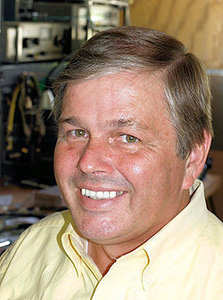
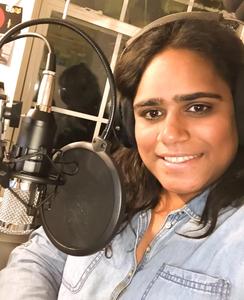
.jpg)
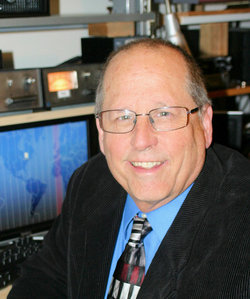
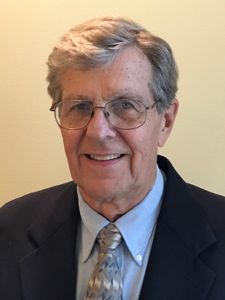
.JPG) "It is likely that the General Availability (GA) release of WSJT-X 2.0, scheduled for 2 weeks from today, will be nearly identical to RC5," Taylor said this week. He also announced that a final FT8 "practice contest" would take place on Saturday, December 1, 0200 - 0300 UTC (Friday evening, November 30 in North American time zones).
"It is likely that the General Availability (GA) release of WSJT-X 2.0, scheduled for 2 weeks from today, will be nearly identical to RC5," Taylor said this week. He also announced that a final FT8 "practice contest" would take place on Saturday, December 1, 0200 - 0300 UTC (Friday evening, November 30 in North American time zones).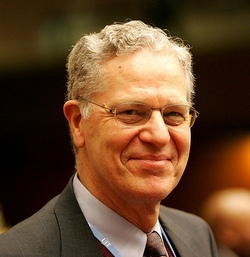
 Sponsored by
Sponsored by 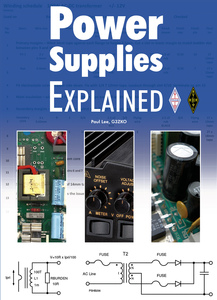 Some believe there is a little magic in power supply design. Beginners may be especially wary of the challenging mixture of digital, analog, magnetics, and control loops, with cooling, EMC, and safety to contend with as well. While many books deal with in-depth theory, they often give little guidance on the practical aspects of achieving working designs. Power Supplies Explained is different. It describes how circuits are chosen for the application and how they're designed, including inductors and transformers. Calculations are outlined simply, so the reader can use them as a basis for their own designs.
Some believe there is a little magic in power supply design. Beginners may be especially wary of the challenging mixture of digital, analog, magnetics, and control loops, with cooling, EMC, and safety to contend with as well. While many books deal with in-depth theory, they often give little guidance on the practical aspects of achieving working designs. Power Supplies Explained is different. It describes how circuits are chosen for the application and how they're designed, including inductors and transformers. Calculations are outlined simply, so the reader can use them as a basis for their own designs. by entering your name, call sign, and email address in the fields provided. You'll receive an email every day for 12 days with a special online deal. Each deal is valid for 1 day only at
by entering your name, call sign, and email address in the fields provided. You'll receive an email every day for 12 days with a special online deal. Each deal is valid for 1 day only at 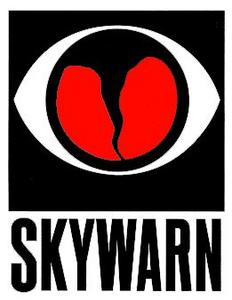 The object of SRD is for all amateur stations to exchange contact information with as many National Weather Service stations as possible on 80, 40, 20, 15, 10, 6, and 2 meters, plus 70 centimeters. Contacts via repeaters are permitted. Stations should exchange call sign, signal report, and location, plus a quick description of the weather at your location (e.g., sunny, partly cloudy, windy, rainy, etc.). EchoLink and IRLP nodes, including the Voice over Internet Protocol Weather Net (
The object of SRD is for all amateur stations to exchange contact information with as many National Weather Service stations as possible on 80, 40, 20, 15, 10, 6, and 2 meters, plus 70 centimeters. Contacts via repeaters are permitted. Stations should exchange call sign, signal report, and location, plus a quick description of the weather at your location (e.g., sunny, partly cloudy, windy, rainy, etc.). EchoLink and IRLP nodes, including the Voice over Internet Protocol Weather Net (.jpg) On October 10, 2018, an Enforcement Bureau agent from the FCC's San Francisco Office responded to a complaint of an unlicensed FM station operating on 95.7 MHz in Carmichael. The agent confirmed by direction-finding techniques that a signal on 95.7 MHz was emanating from a residence, and Thomas subsequently admitted that he was the operator of this station, the FCC said in the NoUO. The agent measured the field strength of the signal and found that it exceeded the maximum permitted level of 250 µV per meter at 3 meters, established under Part 15.
On October 10, 2018, an Enforcement Bureau agent from the FCC's San Francisco Office responded to a complaint of an unlicensed FM station operating on 95.7 MHz in Carmichael. The agent confirmed by direction-finding techniques that a signal on 95.7 MHz was emanating from a residence, and Thomas subsequently admitted that he was the operator of this station, the FCC said in the NoUO. The agent measured the field strength of the signal and found that it exceeded the maximum permitted level of 250 µV per meter at 3 meters, established under Part 15.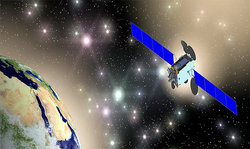 "I applaud the Qatar Amateur Radio Society (QARS) and AMSAT-DL's achievement, the result of 6 years of work," AMSAT President Joe Spier, K6WAO, said. "To be a first at something in space is indeed a rare, rare honor. It is this type of honor that AMSATs around the world work on every day."
"I applaud the Qatar Amateur Radio Society (QARS) and AMSAT-DL's achievement, the result of 6 years of work," AMSAT President Joe Spier, K6WAO, said. "To be a first at something in space is indeed a rare, rare honor. It is this type of honor that AMSATs around the world work on every day." Specifically, the Order permits access to two of the Galileo system's satellite signals -- the E1 signal transmitted in the 1,559 - 1,591 MHz portion of the 1,559 - 1,610 MHz Radionavigation-Satellite Service (RNSS) band, and the E5 signal transmitted in the 1,164 - 1,219 MHz portion of the 1,164 - 1,215 MHz and 1,215 - 1,240 MHz RNSS bands. These are the same RNSS bands in which the US GPS satellite signals operate.
Specifically, the Order permits access to two of the Galileo system's satellite signals -- the E1 signal transmitted in the 1,559 - 1,591 MHz portion of the 1,559 - 1,610 MHz Radionavigation-Satellite Service (RNSS) band, and the E5 signal transmitted in the 1,164 - 1,219 MHz portion of the 1,164 - 1,215 MHz and 1,215 - 1,240 MHz RNSS bands. These are the same RNSS bands in which the US GPS satellite signals operate..jpg) "[I]n the years since the debris mitigation rules were adopted, and notwithstanding any costs imposed by FCC regulations, well over 150 small satellites have been authorized, with at least 20 of those considered amateur satellites," the FCC said in its November 15 Order on Reconsideration. "It appears that, to the extent that any costs have been incurred, the main contributor to costs for amateur and similar LEO missions has to do with the availability of launches to appropriate orbits."
"[I]n the years since the debris mitigation rules were adopted, and notwithstanding any costs imposed by FCC regulations, well over 150 small satellites have been authorized, with at least 20 of those considered amateur satellites," the FCC said in its November 15 Order on Reconsideration. "It appears that, to the extent that any costs have been incurred, the main contributor to costs for amateur and similar LEO missions has to do with the availability of launches to appropriate orbits.".JPG)
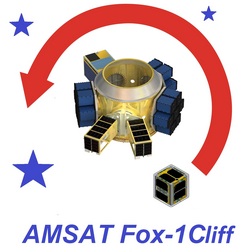 Extreme high-altitude winds this week postponed the Fox-1Cliff Launch. SpaceX announced that the SSO-A SmallSat Express mission scheduled to launch on Wednesday, November 28, was postponed due to extreme high-altitude winds at Vandenberg Air Force Base. AMSAT has announced that the new launch date would be Sunday, December 2, at 1832 UTC. The SSO-A mission will carry several Amateur Radio satellites in addition to AMSAT's Fox-1Cliff. The others include FUNcube on ESEO, JY1-SAT, K2SAT, and ExseedSat. -- Thanks to AMSAT News Service
Extreme high-altitude winds this week postponed the Fox-1Cliff Launch. SpaceX announced that the SSO-A SmallSat Express mission scheduled to launch on Wednesday, November 28, was postponed due to extreme high-altitude winds at Vandenberg Air Force Base. AMSAT has announced that the new launch date would be Sunday, December 2, at 1832 UTC. The SSO-A mission will carry several Amateur Radio satellites in addition to AMSAT's Fox-1Cliff. The others include FUNcube on ESEO, JY1-SAT, K2SAT, and ExseedSat. -- Thanks to AMSAT News Service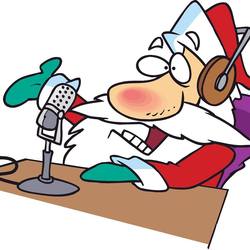 Santa's Radio Club Special Event Set for December 1 - 8. The annual
Santa's Radio Club Special Event Set for December 1 - 8. The annual .JPG) Broadcaster Jamie Dupree, NS3T, Receives Radio & Television Correspondents' Association Career Achievement Award. The Radio & TV Correspondents' Association (
Broadcaster Jamie Dupree, NS3T, Receives Radio & Television Correspondents' Association Career Achievement Award. The Radio & TV Correspondents' Association (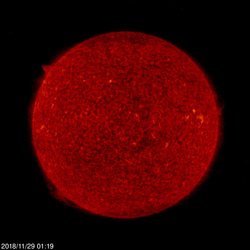 Sunspots appeared on just 2 days of the reporting week, the weekend of November 24 - 25, with sunspot numbers of 14 and 15. The average daily sunspot number, compared to the previous 7 days, declined from 9.4 to 4.1, while the average daily solar flux dipped from 70.8 to 68.9.
Sunspots appeared on just 2 days of the reporting week, the weekend of November 24 - 25, with sunspot numbers of 14 and 15. The average daily sunspot number, compared to the previous 7 days, declined from 9.4 to 4.1, while the average daily solar flux dipped from 70.8 to 68.9.







